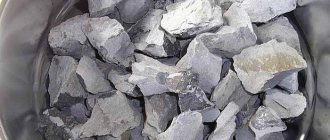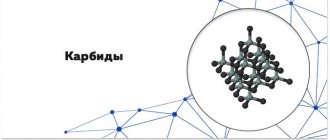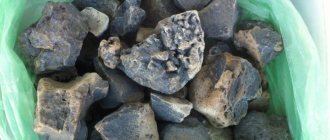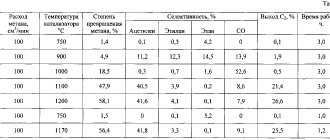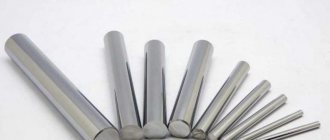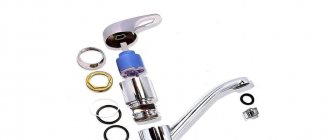History of calcium carbide production
Calcium carbide was obtained by accident in 1862. The German chemist Friedrich Wöhler, when trying to isolate metallic calcium from lime (calcium carbonate CaCO3) by long-term calcination of a mixture consisting of lime and coal, received a grayish mass in which found signs of metal. As a result of a failed experiment, he threw this mass into a landfill in the yard. During the rain, a laboratory technician noticed the release of some gas from the ejected mass. This interested Friedrich Wöhler, he analyzed the gas and found that it was acetylene (C2H2), previously discovered by Edmund Davy in 1836.
However, the name of this gas was given to the French chemist Pierre Eugene Marcelin Berthelot after he obtained acetylene in 1863 by passing hydrogen over graphite electrodes heated by an electric arc.
Thomas Leopold "Carbide" Willson in 1888 and Ferdinand Frederic Henri Moissan in 1892 independently discovered a method for producing calcium carbide in an electric arc furnace, which served as an impetus for the further development of industrial production of technical calcium carbide .
In Russia, the first plants for the production of calcium carbide were built by the Perun joint-stock company in 1908 in Zemkowice, and in 1910 in St. Petersburg. In 1914, this plant operated two carbide furnaces with a capacity of 500 kW and two furnaces with a capacity of 900 kW.
In 1917, an installation with an electric furnace with a capacity of 1800 kW was built at the Makeevka Metallurgical Plant. Almost simultaneously, carbide furnaces were also launched at the Baku plant for the needs of the oil industry and at the Allaverdi copper smelter.
In 1930, the first large carbide plant was built and launched in Rastyapino (now Dzerzhinsk, Nizhny Novgorod region). At this plant, for the first time, calcium carbide began to be produced not only as a commercial product, but also for the production of calcium cyanamide.
Preparation of calcium carbide
Technical calcium carbide is obtained by reacting calcined lime (CaO) with coke (3C) or anthracite in electric furnaces at a temperature of 1900-2300°C. A charge consisting of a mixture of coke or anthracite and lime in a certain proportion is loaded into an electric furnace, the charge is melted, and an endothermic chemical reaction occurs (with heat absorption) according to the formula:
CaO+3C = CaC2+CO -108 kcal/mol
Thus, to obtain 1 ton of calcium carbide it is required:
- 4000 kg lime
- 600 kg coke
- 1965 kWh of electricity
However, due to significant energy losses in carbide furnaces, practically to produce 1 ton of technical calcium carbide, from 2800 to 3700 kWh are consumed, depending on the power of the furnace. If the furnace power is less than 1000 kW, then the electricity consumption can reach 4000 kWh/t or more.
Molten calcium carbide is poured from the furnace into special molds, in which it cools and hardens. After hardening, it is crushed in jaw crushers and sorted in lattice drums into pieces of various sizes from 2 to 80 mm.
The yield of pieces of various sizes during crushing is given below:
| Granulation, mm | 25-80 | 15-25 | 8-15 | 2-8 | up to 2 |
| Exit, % | 66-80 | 8-10 | 6-14 | 4,5-6,5 | 1,5-3,0 |
Commercial calcium carbide is considered to have a granulation size of 2 to 100 mm. The carbide dust produced by crushing is unsuitable for normal acetylene generators due to its too vigorous reaction with water, overheating and risk of explosion.
The dependence of the specific gravity of technical calcium carbide on the CaC2 content in it is shown in the table below:
| Content of CaC2 in technical carbide, % | 80 | 75 | 70 | 65 | 60 | 55 |
| Specific gravity of technical carbide | 2,32 | 2,37 | 2,41 | 2.45 | 2,49 | 2,53 |
Technical calcium carbide produced in electric furnaces contains a number of impurities that enter it from the raw materials used in its production. Average chemical composition used for welding:
| Component | Content,% (by weight) |
| Calcium carbide (CaC2) | 72,5 |
| Lime (CaO) | 17,3 |
| Magnesium oxide (MgO) | 0,4 |
| Iron oxide (Fe2O3) and aluminum oxide (Al2O3) | 2,5 |
| Silicon oxide (SiO2) | 2,0 |
| Sulfur (S) | 0,3 |
| Carbon (C) | 1,0 |
| Other impurities | 4,0 |
As can be seen from the given composition, the main impurity is lime.
Impurities contained in the starting materials used for production deteriorate its quality. Particularly harmful impurities are phosphorus and sulfur, which pass into calcium carbide in the form of calcium phosphorous and sulfur compounds, and during the decomposition of the carbide they enter acetylene in the form of hydrogen phosphorous and hydrogen sulfide.
Physical properties of alkynes
Alkynes, with the exception of acetylene, are colorless and odorless. Under normal conditions, the first 4 members of the series are gases, 5 to 15 are liquids, and more than 15 are solids.
Alkyne solubility
Alkynes are relatively polar molecules and are therefore highly soluble in polar or low polarity solvents. Alkynes dissolve slightly in water, but better than alkanes and alkenes.
Melting and boiling points of alkynes
Typically, alkynes melt and boil at higher temperatures than the corresponding alkanes and alkenes. The melting and boiling points of alkynes increase in proportion to their molecular weight.
The table shows the physical constants of some alkynes:
Hydrolysis or calcium carbide plus water
When calcium carbide interacts with water, a reaction occurs called hydrolysis. Hydrolysis of calcium carbide was once the main industrial method for producing acetylene, a flammable gas used in gas welding and gas cutting. You can learn about another production method from the article on the production of acetylene.
When calcium carbide (CaC2) reacts with water (H2O), a gas is obtained - acetylene (C2H2) and slaked lime (Ca(OH)2), which is a waste. The chemical activity of calcium carbide in relation to water is so great that it is decomposed even by the water of crystallization contained in salts.
The exothermic reaction (i.e. with the release of heat) of the interaction of calcium carbide with water proceeds rapidly according to the equation:
CaC2+2H2O=C2H2+Ca(OH)2 +30.4 kcal/mol
The thermal effect of the reaction consists of the heat released when calcium carbide and quicklime react with water. The interaction of lime with water proceeds according to the equation:
CaO+H2O = Ca(OH)2 +15.2 kcal/mol
Acetylene yield is the volume of acetylene in liters released during the decomposition of 1 kg of carbide, reduced to 20° and 760 mm Hg. Art.
To decompose 1 kg of chemically pure calcium carbide, 0.562 kg of water is theoretically required, which produces 0.406 kg of acetylene (285 l) and 1.156 kg of slaked lime.
The significant thermal effect of the reaction of calcium carbide and the danger of overheating of acetylene force the process to be carried out with a large excess of water for cooling. This makes the process safer. The temperature of the acetylene leaving the generator exceeds the ambient temperature by only 10-15°C.
Amount of water required to react with calcium carbide
The minimum amount of water required to cool the reaction of 1 kg of calcium carbide can be calculated as follows.
When 1 kg of 70% calcium carbide decomposes, 0.284 kg of acetylene and 1.127 kg of calcium oxide hydrate are formed, i.e. slaked lime (assuming the calcium oxide content in calcium carbide to be 24%).
We assume that the initial water temperature is 15° C, and the temperature in the generator during operation is 60° C. The heat balance equation for 1 kg of calcium carbide is expressed as follows:
q=q1+q2+q3+q4+q5
where q is the amount of heat released during the decomposition of 1 kg of 70% calcium carbide, equal to 397 kcal/kg q1 is the amount of heat spent on heating the resulting slaked lime from 15 to 60°C: q1= 1.127? (60-15) -0.23= 11.7 kcal 0.23 - average heat capacity of calcium oxide hydrate in kcal/kg
q2 - the amount of heat spent on heating the resulting acetylene from 15 to 60 ° C: q2 = 0.284? (60-15)-0.336 = 4.3 kcal 0.336 - average heat capacity of 1 kg of acetylene in kcal in the specified temperature range
q3 - heat spent on evaporation of water in the amount of 0.034 kg (at 60 ° C the content of water vapor saturating acetylene obtained from 1 kg of calcium carbide is equal to 34 g) latent heat of evaporation of water - 539 kcal / kg q3 = 0.034?539+ 0.034?1?(60-15) -19.9 kcal
q4 - heat loss to the environment and to heating the walls of the generator, it is approximately 7% of the total amount of heat released: q4 = 397? 7/100 = 27.8 kcal
q5 - amount of heat spent on heating water to a temperature of 60° C: q5=q?(q1+q2+q3+q4)=397?(11.7+4.3+19.9+27.8) = 336 .3 kcal
The required minimum safe volume of water is:
V=q5/(60-15)?1=336.3/45?7.5 l
Since 1 m3 of acetylene at an absolute pressure of 1 kgf/mm2 and 20°C weighs 1.09 kg, therefore, from 1 kg of chemically pure calcium carbide it is theoretically possible to obtain 0.406/1.09 = 0.3725 m3, or 372.5 l acetylene.
As mentioned above, technical calcium carbide usually contains no more than 70-80% CaC2. Therefore, from 1 kg of technical calcium carbide you can get from 230 to 280 liters of acetylene.
If we take into account the losses of acetylene due to dissolution in water and purging of the acetylene generator, then to obtain 1 m3 (1000 dm3) of acetylene it is practically necessary to consume 4.3-4.5 kg of calcium carbide. More accurate data on the actual yield of acetylene depending on the amount of impurities (grade) and the size of the “pieces” (granulation) are indicated in GOST 1460.
Parameters affecting the rate of reaction with water
The smaller the pieces, the faster the reaction of calcium carbide with water occurs.
Calcium carbide with a size of 50×80 mm decomposes completely within 13 minutes, and with a size of 8×15 mm - within 6.5 minutes.
When the size of the pieces is less than 2 mm, calcium carbide is considered waste and is called carbide dust. Carbide dust decomposes almost instantly. When interacting with water, the reaction of carbide dust occurs on the surface of the water and the heat generated cannot be quickly removed. This leads to an increase in temperature in the reaction zone and overheating of carbide particles and released acetylene. In this case, the presence of air is especially dangerous, since the ignition temperature of the acetylene-air mixture is quickly reached. Therefore, carbide dust cannot be used in conventional acetylene generators designed to operate on lump calcium carbide, as this may cause an explosion of acetylene in the generator. Specially designed generators are used to decompose carbide dust.
The higher the water temperature, the faster the calcium carbide reaction occurs. If the water is heavily contaminated with slaked lime formed during the reaction of calcium carbide, the reaction will slow down.
When immobile calcium carbide decomposes in an insufficient amount of water, pieces of it may become covered with a crust of slaked lime and become very overheated, and the following reaction may occur:
CaC2+Ca(OH)2 = C2H2+2CaO
In this case, the reaction of calcium carbide occurs due to the removal of moisture contained in slaked lime. As a result, the density of the crust increases, which leads to even greater overheating. Therefore, continuous removal of lime from the reaction zone is of great importance, since overheating can lead to an explosion of the acetylene-air mixture or cause explosive decomposition of acetylene.
If equal amounts of calcium carbide are decomposed by various gradually decreasing amounts of water, then the temperature of the resulting acetylene-water vapor mixture will correspondingly increase. At a temperature of about 90°C, almost all the heat (with the exception of the heat spent on heating acetylene and carbide sludge) is spent on the formation of water vapor. These reaction conditions correspond to the process by which dry calcium oxide hydrate is obtained, since all the water introduced into the reaction is spent on the decomposition of the carbide and the formation of water vapor.
When calcium carbide is immersed in water, the decomposition process also proceeds very unevenly: at first the reaction is very active with the rapid release of acetylene, and then the reaction rate decreases. This is explained by the reduction in the surface of the pieces and the fact that they are covered with a crust of lime, which prevents the free access of water.
When water is mixed with the calcium carbide in it, the reaction occurs faster and more uniformly.
The reaction rate of calcium carbide in water depends on the purity of the calcium carbide and the contact surface of the calcium carbide pieces with water.
The reaction rate of calcium carbide in water is a very important element that characterizes the quality of calcium carbide. For practical purposes, the concept of decomposition duration is used.
The duration of decomposition is considered to be the time during which 98% of the total amount of acetylene is released, which can be separated from calcium carbide, since the remainder decomposes very slowly and does not characterize the decomposition process in relation to the operating conditions of acetylene generators.
The table below shows experimental data on the duration of decomposition of calcium carbide depending on the size of its pieces.
| Piece sizes, mm | Dust | 2/4 | 5/8 | 8/15 | 15/25 | 25/50 | 50/80 |
| Decomposition time, min. | Few seconds | 1,17 | 1,65 | 1,82 | 4,23 | 13,5 | 16,6 |
It should be noted that these tables characterize only those calcium carbide samples with which experiments were carried out. In practice, significant deviations may occur, mainly in the direction of decreasing the reaction rate.
The rate of decomposition largely depends on the yield of acetylene from calcium carbide. The lower the yield, the slower the reaction rate.
The chart below shows the changes in the decomposition rate of two grades of calcium carbide with the same lump sizes (25/50).
When decomposing 1 kg of calcium carbide with an acetylene yield of 263 l/kg, 220 l of acetylene are released in the first 3 minutes, and accordingly, with a yield of 226 l/kg, only 150 l.
Chemical properties of alkynes
In general, alkynes are more reactive than alkanes and alkenes. Most of the reactions in which they participate are electrophilic addition reactions. However, terminal alkynes (the triple bond is at the end of the chain) also undergo substitution reactions. The hydrogen atoms at the sp-hybridized carbon atom are capable of undergoing protonation, as a result of which alkynes have a relatively acidic nature.
Electrophilic addition reactions (carbon-carbon triple bond reactions)
1) Hydrogenation of alkynes. In the presence of active catalysts (nickel, platinum), the reduction of alkynes with hydrogen occurs immediately to alkanes. When using less active catalysts (Pd, Raney iron), the reaction proceeds through the stage of alkene formation:
When hydrogenating acetylene homologues in the first stage, cis-olefins are obtained.
2) The halogenation of alkynes occurs in two easily separable stages, of which the first stage proceeds more energetically. If there is a lack of halogen, the reaction proceeds in one stage; if there is an excess, it occurs in two stages:
3) Hydrohalogenation of alkynes also occurs in two separable stages. During the hydrochlorination of acetylene, at the initial stage, an important industrial product is formed - vinyl chloride, followed by the formation of 1,1-dichloroethane:
The addition of an HCl molecule to vinyl chloride occurs according to Markovnikov’s rule. The HBr molecule is added in a similar way.
4) Hydration of alkynes occurs according to Markovnikov’s rule with the participation of Hg2+ as a catalyst ( Kucherov reaction ). During this reaction, acetaldehyde is formed from acetylene, and ketones are formed from its homologues:
5) Addition of alcohols and mercaptans . When exposed to potassium hydroxide, acetylene and monosubstituted acetylenes add alcohols under pressure, forming acrylic vinyl ethers (Reppe, A.E. Favorsky, M.F. Shostvkovsky): The addition of mercaptans occurs in a similar way.
6) Addition of acids.
The addition of acetic acid to acetylene occurs under conditions of heterogeneous catalysis (H3PO4 or B2O3) with the formation of vinyl acetate:
Vinyl acetate polymerizes well to form polyvinyl acetate (PVA):
The addition of hydrocyanic acid to acetylene occurs to form acrylonitrile:
Acrylonitrile is used to produce polyacrylonitrile: 7) Addition of chlorides of some metals to acetylene:
 Polymerization reactions
Polymerization reactions
Dimerization of acetylene occurs in the presence of Cu(I) salts to form vinyl acetylene. Its further interaction with hydrochloric acid leads to the formation of chloroprene, which is used in the production of chloroprene rubbers:
HELL. Petrov obtained isobutylene by cross-dimerization of acetylene. Nickel acts as catalysts in the presence of zinc chloride:
Trimerization of acetylene in the presence of active carbon and at a temperature of about 600°C leads to the formation of such an important product as benzene ( Zelinsky reaction ):
The scientist Schaeffer discovered in 1966 that when a solution of dimethylacetylene in benzene is passed over aluminum chloride, the latter trimerizes. The reaction product is hexamethylbicyclo[2,2,0]hexadiene (hexamethyldewar benzene), which then, when exposed to temperature, undergoes isomerization into hexamethylbenzene. When dimesitylene cobalt is used as a catalyst, hexamethylbenzene is obtained directly from dimethylacetylene:
Tetramerization of acetylene under the action of complex nickel salts leads to the formation of cycloocta-1,3,5,7-tetraene ( Reppe synthesis ):
10) Oxidation of alkynes with a concentrated solution of potassium permanganate (KMnO4) in an acidic medium proceeds with the formation of carboxylic acids. The pink KMnO4 solution becomes discolored during the reaction:
Oxidation of alkynes under mild conditions , i.e. dilute solution of KMnO4, room temperature, occurs without breaking bonds. When acetylene is oxidized, the reaction product is oxalic acid; when its homologues are oxidized in a neutral environment, the reaction can be stopped at the stage of diketone formation:
When alkynes burn, they are completely oxidized to carbon dioxide and water. The reaction is exothermic and proceeds with the release of 1300 kJ/mol of heat:
